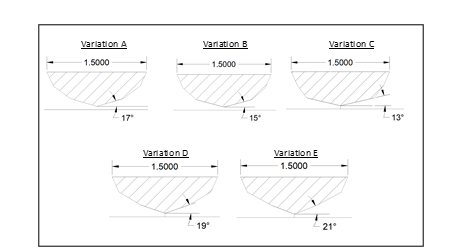A Hull Form Design Analysis with Variations of Block Coefficient (Cb) and Cross-Sectional Area (CSA)
DOI:
https://doi.org/10.35718/ismatech.v3i2.8481800Keywords:
Block Coefficient, Cross-Sectional Area, Deadrise Angle, Resistance, Planing PerformanceAbstract
This study investigates the influence of hull-form variations on the hydrodynamic performance of a two-passenger leisure boat designed for reservoir operation. Five hull models were developed with deadrise angles of 13°, 15°, 17°, 19°, and 21° to examine how changes in the block coefficient (Cb) and cross-sectional area (CSA) affect total resistance and maneuvering characteristics. Numerical calculations and Computational Fluid Dynamics (CFD) simulations were performed for validation. The 13° deadrise model, which had the highest Cb, exhibited the lowest total resistance of 0.92 kN, while MATLAB-based maneuvering analysis showed the largest turning radius of 9.32 m. Conversely, the 21° deadrise model achieved the smallest turning radius of 5.91 m. At a Froude number (Fn) of 1.37, the boat operates in the planing regime, where a fuller hull enhances hydrodynamic lift and reduces wetted surface area, resulting in lower drag but reduced maneuverability. The results offer practical insights for designing efficient leisure boats optimized for calm-water environments such as reservoirs.

Downloads
Published
How to Cite
Issue
Section
License
Copyright (c) 2025 Hendy Pambudi Nugroho, Viony Fako Syahputri, Khoirul Anam , Mahesa Arma Fadhilah

This work is licensed under a Creative Commons Attribution-ShareAlike 4.0 International License.


















